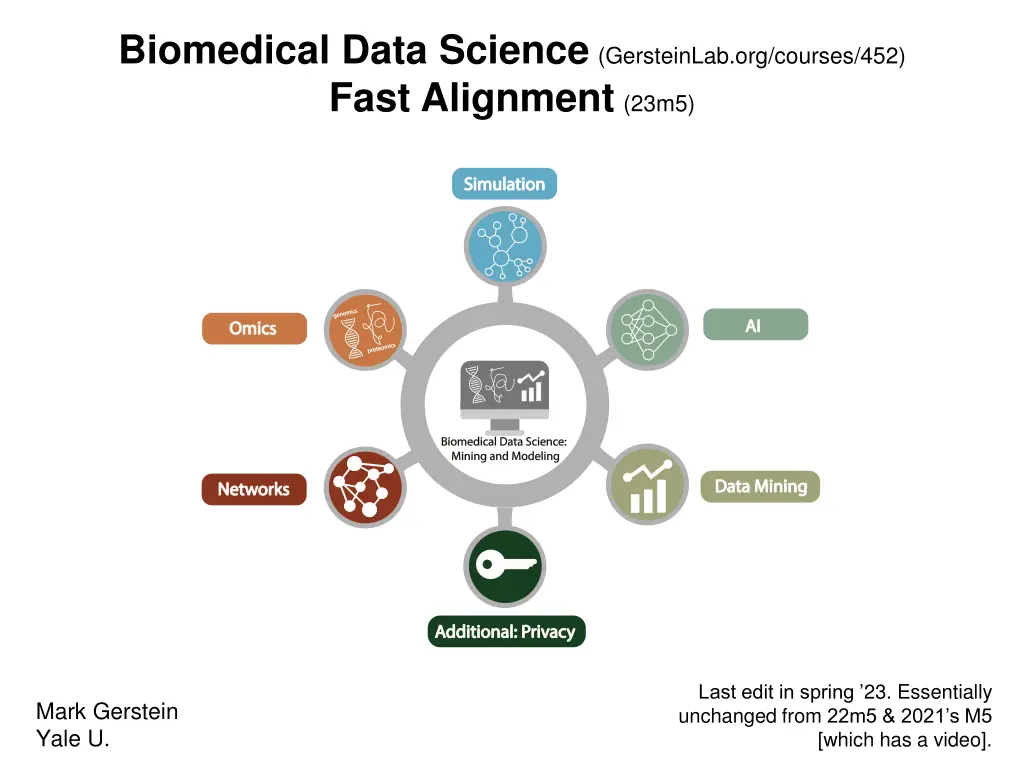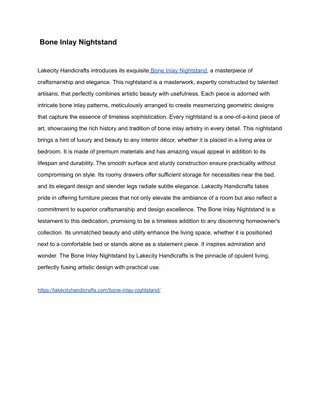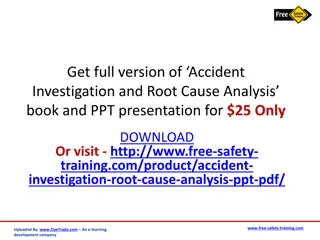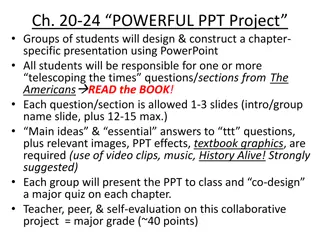
Bioinformatics Computational Complexity and Sequence Alignment
Explore the computational complexity and fast sequence alignment methods in bioinformatics, as discussed by M. Gerstein from Yale University. Learn about dynamic programming algorithms, trade-offs between calculation time and memory usage, and applications in database search and short read alignment to reference genomes.
Download Presentation

Please find below an Image/Link to download the presentation.
The content on the website is provided AS IS for your information and personal use only. It may not be sold, licensed, or shared on other websites without obtaining consent from the author. If you encounter any issues during the download, it is possible that the publisher has removed the file from their server.
You are allowed to download the files provided on this website for personal or commercial use, subject to the condition that they are used lawfully. All files are the property of their respective owners.
The content on the website is provided AS IS for your information and personal use only. It may not be sold, licensed, or shared on other websites without obtaining consent from the author.
E N D
Presentation Transcript
Biomedical Data Science(GersteinLab.org/courses/452) Fast Alignment(23m5) 1 (c) M Gerstein, 2012, Yale, gersteinlab.org Last edit in spring 23. Essentially unchanged from 22m5 & 2021 s M5 [which has a video]. Mark Gerstein Yale U.
Computational Complexity The dynamic programming alignment algorithm is O(n m) ~ O(n2) in speed and memory N A B C N Y R Q C L C R P M 2 (c) M Gerstein, 2012, Yale, gersteinlab.org A Y C Y N 1 1 1 1 1 1 O(n2) in speed and memory is not good enough for important applications database search short read alignment to reference genome 1 M R 5 4 3 3 2 2 0 0 C K C R B P 3 3 2 2 1 0 3 3 2 1 2 0 4 3 3 1 1 0 3 3 2 1 1 0 3 3 2 1 1 0 3 3 2 2 1 0 3 3 2 1 1 0 4 3 3 1 1 0 3 3 2 1 1 0 3 2 3 1 1 0 1 1 1 2 1 0 0 0 0 0 0 1 0 0 0 0 0 0 M Note how this would scale to 3, 4, 5 sequences N
Fast sequence alignment Alignment via dynamic programming (NW/SW) useful for aligning the small numbers of protein, DNA sequences available in the 1980s 1990s hundreds of thousands of protein sequences Today thousands of genome sequences 3 (c) M Gerstein, 2012, Yale, gersteinlab.org => need for faster, more coarse-grained alignment methods first application: find your favorite protein in a sequence database next-gen seq application: align millions of short reads to a reference database
Computational Complexity Designing algorithms involves a trade-off between calculation time and memory usage & sensitivity Steps that can be pre-calculated and stored efficiently in memory speed up the algorithm 4 (c) M Gerstein, 2012, Yale, gersteinlab.org FASTA (hashing the query) BLAST (more efficient query hashing) BLAT (hashing the DB) BWA / Bowtie (BW transform of the DB)
FASTA Hash table of short words in the query sequence Go through DB and look for matches in the query hash (linear in size of DB) perl: $where{ ACT } = 1,45,67,23.... K-tuple determines word size (k-tup 1 is single aa) by Bill Pearson 5 (c) M Gerstein, 2012, Yale, gersteinlab.org VLICT = _ VLICTAVLMVLICTAAAVLICTMSDFFD
Join together query lookups into diagonals and then do a full alignment 6 (c) M Gerstein, 2012, Yale, gersteinlab.org (Adapted from D Brutlag)
Basic Blast Altschul, S., Gish, W., Miller, W., Myers, E. W. & Lipman, D. J. (1990). Basic local alignment search tool. J. Mol. Biol.215, 403-410 Indexes query Starts with all overlapping words from query Calculates neighborhood of each word using PAM matrix and probability threshold matrix and probability threshold Looks up all words and neighbors from query in database index Extends High Scoring Pairs (HSPs) left and right to maximal length Finds Maximal Segment Pairs (MSPs) between query and database Blast 1 does not permit gaps in alignments 7 (c) M Gerstein, 2012, Yale, gersteinlab.org
BLAST: Basic Local Alignment Search Tool Query 8 (c) M Gerstein, 2012, Yale, gersteinlab.org DB Extend hash hits into High Scoring Segment Pairs (HSPs) Stop extension when total score doesn t increase Extension is O(N). This takes most of the time in BLAST
BLAST: Basic Local Alignment Search Tool In simple BLAST algorithm, find best scoring segment in each DB sequence Statistics of these scores determine significance Number of hash hits ~ O(N*M*D) 9 (c) M Gerstein, 2012, Yale, gersteinlab.org where N is query size M is average size of seq in DB D is DB size
Blast2: Gapped Blast 10 (c) M Gerstein, 2012, Yale, gersteinlab.org
Blast2: Gapped Blast Gapped Extension on Diagonals with two Hash Hits Statistics of Gapped Alignments follows Extreme Value Distribution (EVD) empirically 11 (c) M Gerstein, 2012, Yale, gersteinlab.org
Short read alignment to a reference genome BLAT Burrows-Wheeler transform 12 (c) M Gerstein, 2012, Yale, gersteinlab.org
BLAT BLAST-like alignment tool created by Jim Kent (UCSC) during assembly of the human genome 13 (c) M Gerstein, 2012, Yale, gersteinlab.org Where BLAST builds an index of the query sequence, BLAT builds an index of the database. Obviously, this will scan more quickly through the DB at the expense of building a huge hash table of the DB initially DB index non-overlapping, potentially sacrificing some sensitivity for decreased memory usage BLAT Genome Res. (2002) 12: 656
Burrows Wheeler Transform What s next: more sophisticated ways of organizing the genome pre-search to speed things up beyond building the DB hash table as in BLAT 14 (c) M Gerstein, 2012, Yale, gersteinlab.org High Level Build a BWT of the genome (cyclically permuting, then sorting, then compressing) Then build a prefix tree of this Take each read and search along the prefix tree in linear time Reverse the transform to find the location of the read in the genome from its position in the prefix tree. Burrows and Wheeler, A Block-sorting Lossless Data Compression Algorithm, Digital Systems Research Center Report 124 (1994)
Burrows Wheeler Transform BWT is a reversible permutation of the characters in a string X 1. build matrix of cyclic rotations of X sort matrix alphabetically example: X = acaacg 0 acaacg$ 6 $acaacg 1 caacg$a 2 aacg$ac 2 aacg$ac 0 acaacg$ 3 acg$aca => 3 acg$aca 4 cg$acaa 1 caacg$a 5 g$acaac 4 cg$acaa 6 $acaacg 5 g$acaac 2. 15 (c) M Gerstein, 2012, Yale, gersteinlab.org Bowtie Genome Biol. (2009) 10: R25
Speed v Sensitivity Tradeoff PSI Blast as a form of Semi-supervised learning BWA Blast FASTA Smith- Waterman PSI-Blast Profiles HMMs 16 (c) M Gerstein, 2012, Yale, gersteinlab.org Sensitivity Speed
Alignment algorithms scaling to keep pace with data generation 17 - Lectures.GersteinLab.org [Sboner et al. ( 11), Muir et al. ( 15) Genome Biology]
What sequence alignment algorithms need to be designed next? A couple of important problems: rapidly align a personal genome to a reference population of human genomes with clinical turn-around time; with privacy => encryption? 3rd generation sequencers: long, error-prone reads useful as scaffolds mixed with more accurate, cheaper short reads 18 (c) M Gerstein, 2012, Yale, gersteinlab.org






















